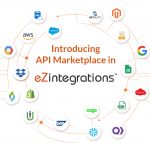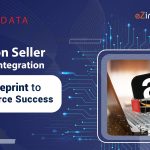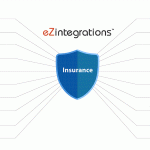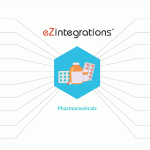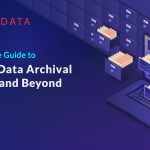Increase your organization’s analytics IQ with winning data systems and capabilities.
The ability to manage a torrent of data is critical to businesses. But even with the emergence of advanced technologies and data-management savants, most companies remain behind the curve. Sometimes they are dicey about investing in data transformation, and at other times they fall blank on how to go about it without breaking the bank.
Getting smarter about using data systems and capabilities can maximize organizations’ odds of successful data mining and digital transformation. So, what should be your data strategy? Let’s parse.
Two Pieces of Data Strategy Puzzle
For all sizes of organizations – large or small – leveraging data for competitive advantage calls for a serious overhaul of how you manage your data. There are two aspects to creating a solid data strategy – data transformation and data governance.
You have the data. Now what? Raw data, such as sales figures, logistics costs, are of limited value until integrated or seen in consonance with other data to guide decision making.
DATA TRANSFORMATION is about assessing the current value of the data and designing a process to alter the structure and format of raw data as per your needs to achieve impact at scale. Transformed data makes it easier for both humans and computers to decipher it and use it. It improves data quality and facilitates compatibility between different applications, systems and data types.
Data transformation comprises processes such as data warehousing, data integration, data migration, and data wrangling. Depending upon your data pipeline, transformation can be undertaken after extracting data from the source or toward the end. Organizations using on-prem data warehouses use ETL (Extract, Transform, Load) process wherein data is transformed in the middle step, and those using cloud-based data warehouses (a trend more prominent now with the scalability offered by cloud platforms) use ELT (Extract, Load, Transform) where raw data is stored as it is, and is transformed at the query time.
DATA GOVERNANCE is about upper management’s mindset toward data management. For any enterprise-grade data efforts to succeed, management’s willingness to make up-front investment in data is important. Data Governance covers the need for skilled advisers, technical resources, and a reporting structure pertinent to a well-oiled data strategy.
Here’s how you go about fitting each of this piece into the data strategy puzzle.
A. Data Transformation – For efficient analytics
Successful data transformation efforts follow these steps.
1. Make a business case for transformation.
Companies are trying to boil the ocean to transform every type of data they have access to. It is a bad strategy, which leads to a lot of deadweight data that may not be needed for your goals. The trick lies in identifying, valuing, and prioritizing the set of initiatives that stand to deliver strong returns to your organization. Examine the areas where data, analytics and people can converge to improve business value – basically the quality, service, and value proposition of your offerings.
2. Create an enterprise-scale data architecture.
Data architecture describes how the data would be gathered, stored, transformed, distributed (to analytics platforms and so on), and consumed. Focus on the three dimensions to create data architecture:
a. Defining data sources, capabilities and standards. Do that based on specific business requirements or functional needs (from the first step) that can benefit the most from data integration and data quality.
b. Establishing a single point of data accountability. To achieve that simplify your current data environment by replacing legacy systems, removing duplicate data repositories and setting standards on data retention to reduce unnecessary complexities and risks.
c. Creating a flexible and reusable process that can support multiple use cases. The biggest challenge of data transformation is understanding and preparing messy data every time. It’s an inefficient approach. Create a recyclable process with new platforms that can be used without starting from scratch each time. It will give your transformation process the scalability it desperately needs.
3. Take a stock of current capabilities.
Chart out the efficiency of your present data pipeline – data repositories and flow and unique data domains. It’s pertinent to simplify the data environment and assigning a single source of data to ensure consistency across data architecture. Based on your assessment of existing systems and capabilities, deploy new technologies to better support data design, security, quality, integrity and governance.
4. Test your system.
Finally, test your data model in pilot stages to refine your process, use cases, and inculcate new methods of working.
B. Data Governance – For troubleshooting and decision making
Defining roles and responsibilities is a must for effective data management. The resultant structure is collectively called data governance. Right from data privacy and security to data quality and visualization, data governance lay down the teams and people responsible, sets standards and clarify policies. A few pointers to keep in mind:
- Clear lines of accountability. Depending on the organization’s operating structure, a decentralized or centralized data governance model can be opted for.
- Defining who you are as an organization. Answering this question will help you determine the tone of your data strategy. Are you development centric with huge IT staff and developers who like to build your own infra, or are you a bit leaner and more focused on efficiency and agility? In the former you may build your own platforms, and in the latter you can leverage ready to use, modular, low-cost platforms.
- Going beyond pocket wins with CDO. Scaling data efforts need not only deployment of right capabilities, but a roadmap to successfully reuse those capabilities for multiple use cases. Hiring a Chief Data Officer (CDO) can help in scaling data strategy and bringing business needs closer to data technology.
- Building a reusable, efficient and simplified approach.
From ingesting and cleansing the data to building algorithms and putting them to production for insights, should be a recyclable process based on enterprise-scale technologies.
A Data Strategy That Pays for Itself
Time and cost involved in data management projects often make business leaders hesitate before undertaking tasks of such magnitude. In reality, the truth is a bit more nuanced.
When you invest in data management, the project soon becomes self-funding. The cost-savings led by data transformation are enough to sustain the project operations. According to McKinsey, for companies with an IT budget of USD 1 billion, simplifying and streamlining data management can save USD 70 to 100 million every year.
For businesses to see meaningful benefits from Big Data and AI investments, they need to come out of their mindset of heavy ecosystem requirement. New, flexible and modular platforms are allowing automated integration of data at fraction of costs.
Low-code integration platforms such as iPaaS are making it possible to move data from federate legacy systems to data hub inexpensively. Bizdata provides an easy, affordable and quick digital ecosystem. You can break-even in your data management efforts within 6 months of shifting to Bizdata solutions.
More importantly, modular digital business platforms for data management are not only leading to an easy data integration process but are also democratizing it – leading self-service analytics open to business users. This transfers some of the data management burdens across the organization instead of just IT teams and developers – enabling continuous data flow and efficient strategy oversight.
Being data-driven isn’t about adopting technologies. It’s about imbibing the processes leading to a seminal shift in how you do things. Together, efficient data transformation with iPaaS platforms, and well-structured data governance model can lay ground for fostering a data mindset.


